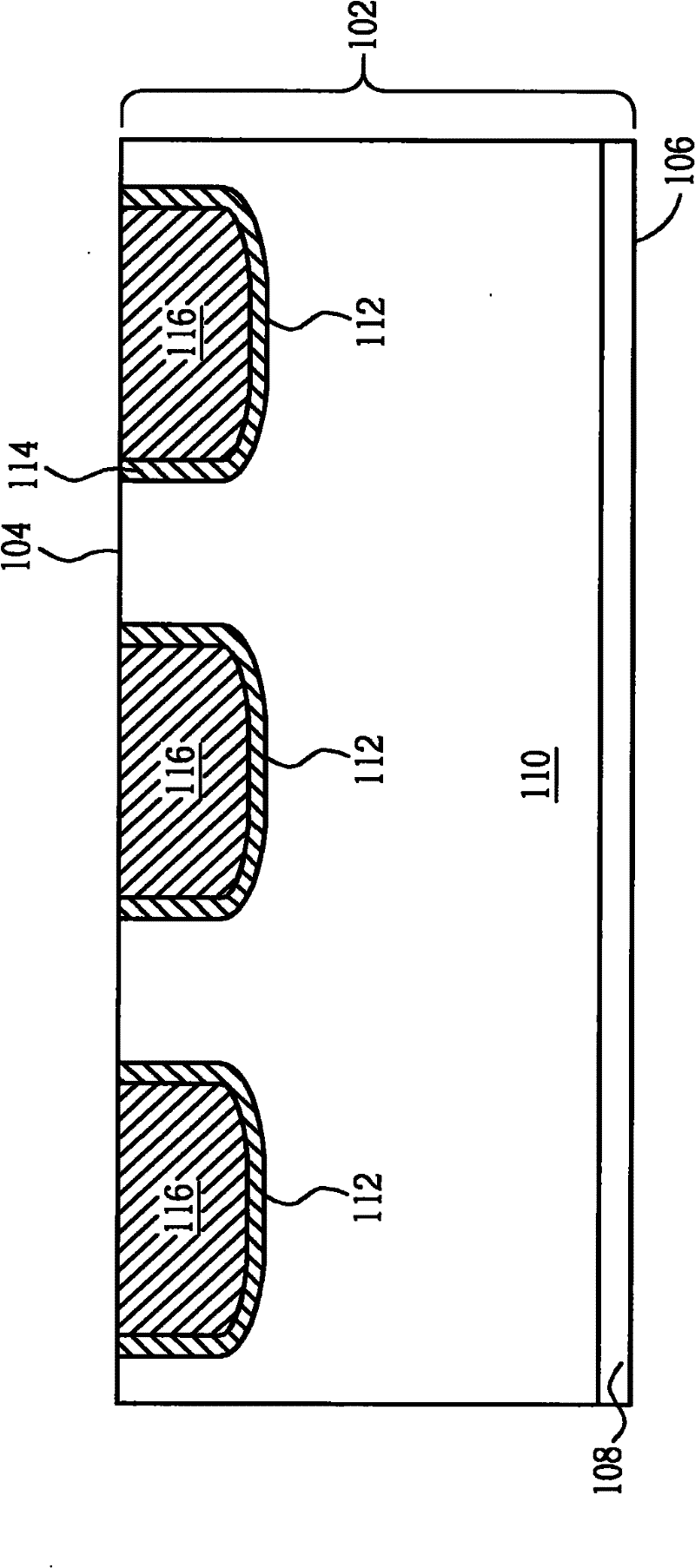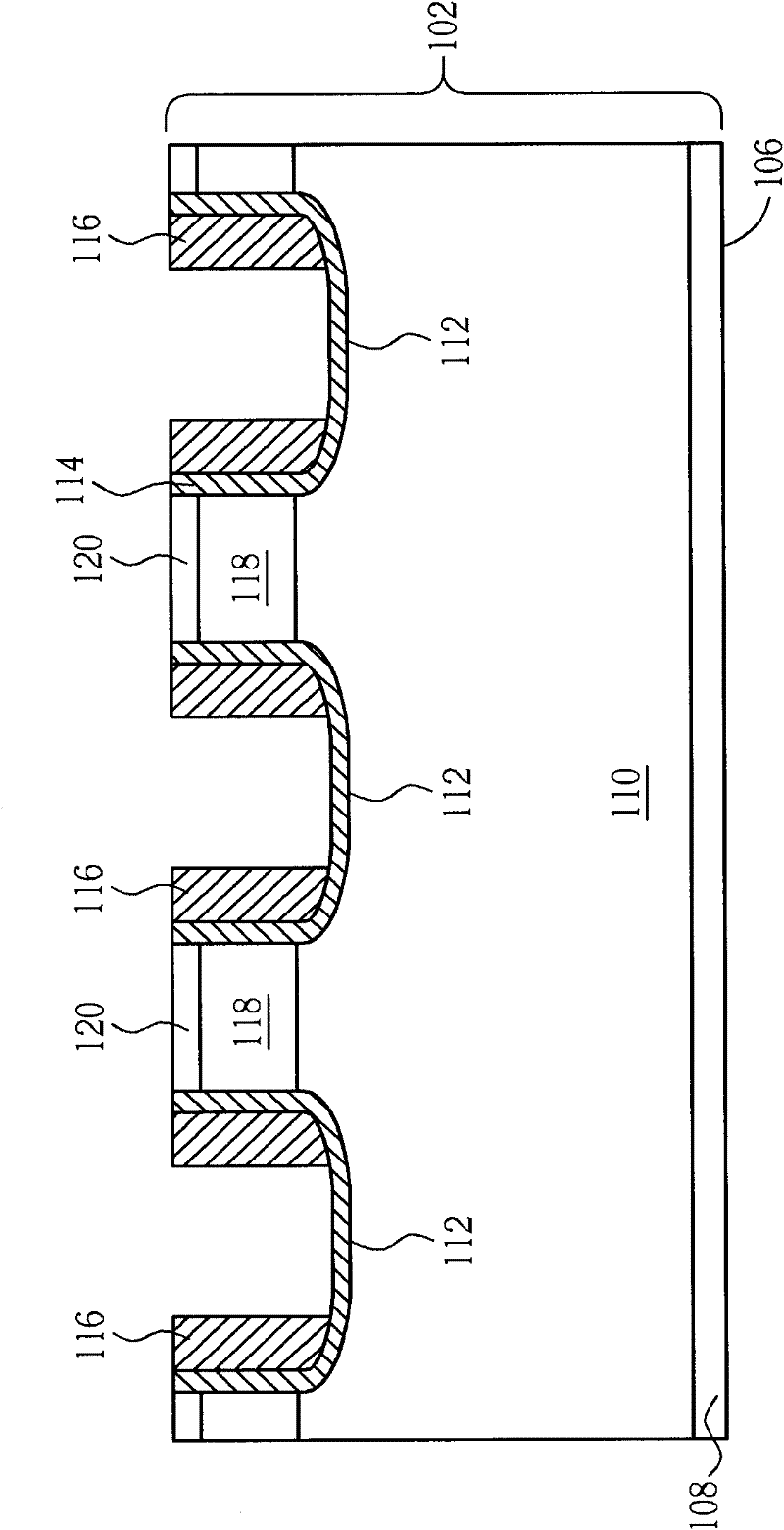Overlapped trench gate semiconductor component and manufacturing method thereof
A semiconductor and trench-type technology, applied in semiconductor/solid-state device manufacturing, semiconductor devices, semiconductor/solid-state device components, etc., can solve the problems of increasing cost and time-consuming, and achieve the goal of reducing Miller effect and feedback capacitance Effect
- Summary
- Abstract
- Description
- Claims
- Application Information
AI Technical Summary
Problems solved by technology
Method used
Image
Examples
Embodiment Construction
[0036] Please refer to Figure 2 to Figure 8 , Figure 2 to Figure 8 It is a schematic diagram of a method for manufacturing an overlapping trench gate semiconductor device according to a first embodiment of the present invention. Such as figure 2 As shown, firstly, a semiconductor substrate 102 is provided, the semiconductor substrate 102 has an upper surface 104 and an opposite lower surface 106, and the semiconductor substrate 102 is formed by a substrate 108 and an epitaxial layer 110 formed on the substrate 108 constitute. The semiconductor substrate 102 has a first conductivity type, such as N-type or P-type, and the semiconductor substrate 102 in this embodiment takes N-type as an example, and the present invention is not limited thereto. The substrate 108 can be a silicon substrate, and both the substrate 108 and the epitaxial layer 110 have the first conductivity type. When the overlapped trench gate semiconductor device is used as a power device, the epitaxial l...
PUM
 Login to View More
Login to View More Abstract
Description
Claims
Application Information
 Login to View More
Login to View More - R&D
- Intellectual Property
- Life Sciences
- Materials
- Tech Scout
- Unparalleled Data Quality
- Higher Quality Content
- 60% Fewer Hallucinations
Browse by: Latest US Patents, China's latest patents, Technical Efficacy Thesaurus, Application Domain, Technology Topic, Popular Technical Reports.
© 2025 PatSnap. All rights reserved.Legal|Privacy policy|Modern Slavery Act Transparency Statement|Sitemap|About US| Contact US: help@patsnap.com



